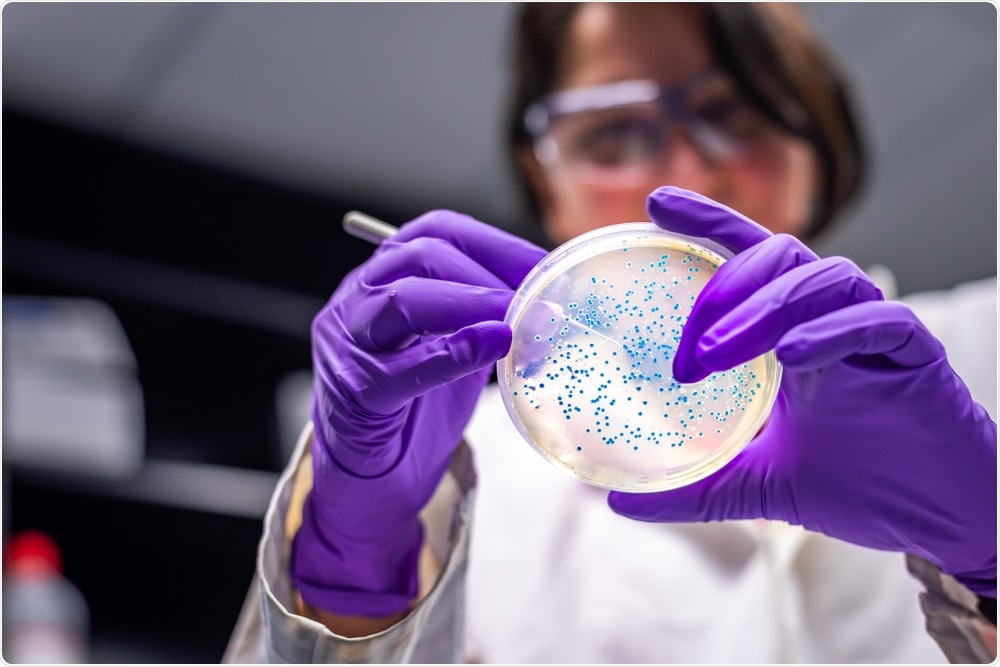There are colonies of microscopic bacteria in different parts of the human body including the nose, mouth, intestines, and lungs. Collectively, these bacteria are known as the body's microbiota.
Studies have revealed that these colonies and communities of bacteria communicate with each other to form networks. These networks are essential for protecting the body against infections.
Now, researchers have discovered that these networks of bacteria can protect babies from respiratory infections. The study titled, “Maturation of microbial networks across body sites is associated with susceptibility to childhood respiratory infections”, was presented at the European Respiratory Society International Congress on October 1, 2019.
 Manjurul Haque | Shutterstock
Manjurul Haque | Shutterstock
Dr. Melanie Clerc, a post-doctoral researcher at the Centre for Inflammation Research, University of Edinburgh (UK), who presented the research, explained that babies who had a stable microbiome experienced fewer respiratory infections than babies who had a disconnected, or poor microbial network.
We know already that bacteria in the gut and respiratory tract are independently associated with susceptibility to and severity of respiratory infections. Up until now, however, researchers have mostly focused on the links between a particular disease and either the bacteria in the gut or the local bacterial community at the site of disease, like the lungs.
We believe we are the first group to show the extent to which microbial communities are linked across different sites in the body, and that having a well-structured, stable microbial network from an early age can be linked to improved respiratory health over the first year of life.”
The study was led by Professor Debby Bogaert and included 120 healthy babies. Samples were collected from the nose, mouth, and gut at ages 1 week after birth followed by two, four and six months after birth.
The participants were part of the Microbiome Utrecht Infant Study in The Netherlands. Only healthy babies born at term were chosen for the study. Babies born with complications or those who had congenital abnormalities were excluded from the study.
All babies born at the Spaarne Hospital in The Netherlands were screened during prenatal appointments with midwives and obstetricians and the ones meeting the inclusion criteria were selected.
In addition to swabs of samples, the researchers also gathered other information including environmental factors, lifestyles, home atmosphere, number of respiratory infections during the first year of life and other parameters.
We analyzed the bacteria present in the nose, mouth, and gut at multiple time points and used a mathematical algorithm to create networks that describe how all of those microbes are linked at each time point and over time.”
Dr. Clerc, Co-author
Results revealed that one week after the birth of the baby, the networks between the microbial colonies in different parts of the baby’s body were well defined and clearly developed. This was true for babies who got around one to two respiratory infections during the first year of their lives.
The networks were primarily between four large colonies of microbes – three of these were seen in the nose, mouth, and gut while the fourth was found of mixed type and was associated with the three other groups. The clusters remained stable throughout the year and the connectivity remained intact in babies who got fewer respiratory infections.
Dr. Clerc said, “However, the networks from children who developed more respiratory tract infections showed small, less-well connected clusters from early on in life, and they tended to change more over time, even before infections occurred.”
She added, “Our findings may lead to new insights into ways of using these cross-site microbial connections to prevent respiratory infections in childhood and to understand how susceptibility to disease is linked to the way these microbial communities mature.”
Clerc spoke about the future of this research saying, “Further, interventions immediately before or after birth, such as cesarean section or antibiotic treatment, might have more impact than we previously predicted because of their extended effect on the ways microbial communities across the body are connected.”
'We may be able to identify those who are more susceptible to respiratory infection'
Next, the team is looking at the exact mechanism by which these networks are formed and how the connections network between each of the bacterial clusters. This would help them understand the effects of medical interventions on communication networks and how these interventions could affect the networks around the time of birth. The researchers would also study the method of feeding and its effect on bacterial networking.
Professor Tobias Welte from Hannover University, Germany, is President of the European Respiratory Society, was not involved in the study but commented:
This study provides some interesting data to show that by assessing the microbial networks of babies early on, we may be able to identify those who are more susceptible to respiratory infection.
This could help healthcare professionals to prevent infection and offer treatment more quickly, which would protect the health of babies and improve patient outcomes, as prevention and early treatment are key to minimizing the potential for long-term respiratory health effects following infection in early life.”
He added, “...we need more research to confirm the link between microbial networks and respiratory effects and the potential for increased susceptibility to respiratory infection.”
The study was funded by NWO-VIDI (The Netherlands) and the clinical study received funding from Spaarne Hospital and the UMC Utrecht.